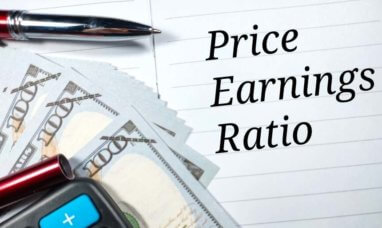Guide to Selling Stocks
Stock selling is often overlooked, but it’s where you actually make your profits in the stock market, so you should know how to sell your stock. Here’s what you need to know to make the most of your stock sale.
In stock investing, there is a lot of focus on which stocks to buy, how to buy them, and the quantities that should be purchased. This is all-important for successful investing, but what’s equally important is selling.
The selling process is where the investor actually collects profits on the stock investment, and there are many things to consider. The timing of the sale, the method of the sale, the expiration for the order, and finally the capital gains tax to be filed on the sale.
Let’s take a detailed look at the selling process and prepare you for profitability.
Knowing When to Sell
Perhaps the most important aspect of a stock sale is timing. The investor wants to maximize their profit, and this depends highly on the investing approach taken.
For value investors, the shareholder wants to keep stock as long as the company continues to grow. However, the investor can sell some of their shares in order to collect profits and possibly repurchase shares during more sluggish or bearish earnings periods.
For trend investors, the shareholder wants to sell at the peak of the trend in order to reap maximum profits. This investor is focused on making faster gains over shorter periods by focusing on fast-growing stocks, and they will sell more often than value investors.
For scalpers and swing traders, the shareholder wants to sell directly after a substantial movement within a short time frame. This is a very advanced method and requires substantial experience, especially as frequent transactions lead to large commissions.
Deciding a Method for Sale
The timing of your sale is often determined by the method of sale. There are several choices for selling, and some of them can occur automatically or even generate additional income. The underlying factor is that your stock is wanted for cash and can be sold.
Direct Market Sale
This is the most direct and basic method of selling stock. If you choose to do a market sale, the stocks will be offered at the current price and purchased at the first possible offer. There must be enough liquidity, or market activity, for someone to purchase your shares.
For particularly active stocks, such as blue-chip stocks, there is plenty of liquidity and this type of sale will likely fill instantly. For more obscure stocks, such as pink slip OTC stocks, it may take some time for the order to fill.
Remember, the stock market is a market like any other. Your broker just facilitates transactions between different owners of shares. Just like any other product, there must be a buyer on the other side of the transaction in order to complete the sale.
Stop-Loss and Take-Profit
This is a popular method of sale that takes a lot of the stress of timing out of investing. Setting a stop-loss order or a stop will automatically offer the stock for sale whenever it hits a fixed price. This is a great way to prevent losses and time your sales.
An investor can set a stop right when they make their first purchase, and this will limit their potential losses to a very specific amount. This is a great tactic for risk management, as a stop will set a fixed amount of loss from each trade according to the trade size.
Similarly, a take-profit order will automatically sell your shares at a certain price above your purchase. This is a great way to lock in your profits at a fixed, planned level. Combining a stop and a take-profit will give you a hands-off way to manage your stock investment.
Trailing Stops
One of the most useful tools for a stock investor is a trailing stop. This is a stop that is manually or automatically set below the price of a successful trade.
If an investment is already successfully profitable, a trailing stop can be set just below the current price in order to lock in profits.
This is a great tool as it guarantees a minimum amount of profits from a successful position. It’s possible to hold a stock to a profitable point and then lose your potential profits after the price goes back down.
With a trailing stop, the potential profits stay locked in and are collected automatically.
Selling Covered Calls
This is a more advanced tactic, and it involves selling the option to purchase your shares at a higher price. This contract is called a call option and other investors will pay you cash upfront for the right to buy your currently owned shares at a specific price.
This works like a take-profit order that generates additional income. By selling the call option, you immediately receive the cost or premium of the option from the buyer.
If the stock price reaches the predetermined strike price of the option contract, the buyer is likely to use or exercise their call option and purchase your shares.
This is called selling covered calls because the call is covered by your ownership of the shares. You still make a profit from the increased stock price, and you also collect cash from selling the option. The tradeoff is that your profit is limited, just like a take-profit order.
Deciding Order Expiration
When submitting your option order, there are several options for how long the order should be open. This is also called time in force and represents the amount of time that your order will be active for being filled.
The default time in force is a day order. This is how most orders are filled, the order will stay open until the end of the trading day. Another option is a Good-Til-Canceled or GTC order which will stay open until the order is filled or canceled.
Less common is the Fill-or-Kill or FOK order which will cancel automatically if the order is not filled immediately at the given price. This allows day traders to ensure a good price for their buying and selling within tight margins.
Accounting for Gains Tax
Profits from stock investments are often taxed as capital gains as opposed to a wage or a salary. The same applies to profits from bonds, precious metals, real estate, and other specific assets.
There is no legal limit to the amount of profit that you can make, and this tax is often substantially high.
The tax is only due after the sale is made and the profit is collected as cash. There are tax exemptions for retirement accounts provided by employers, and in some cases, losses can be deducted from taxable revenue.
In any case, it’s important to be up-to-date with tax laws on capital gains in your region, as it is the duty of the investor collecting profits to correctly pay it.
Featured Image: Twenty20








